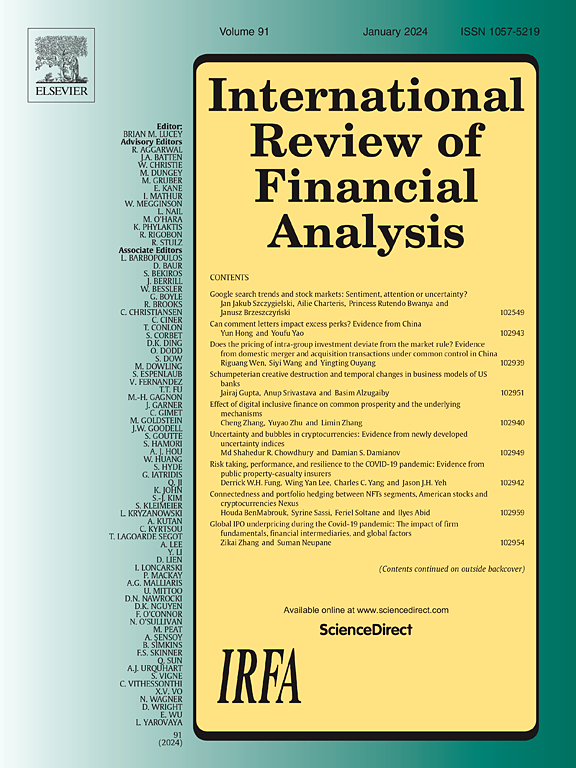How the Four Asian Tigers navigate systemic risk: A Basel framework perspective
IF 9.8
1区 经济学
Q1 BUSINESS, FINANCE
引用次数: 0
Abstract
The Basel Framework serves as a guiding model for mitigating risks within corporate systems and aligning financing standards for cross-border financial intermediaries. Following the widespread adoption of the Basel Accords, financial institutions in Asia have increasingly prioritized credit risk management and maintaining adequate capital buffers. Through a review and risk analysis of 26 years of data from 54,477 corporations across the Four Asian Tigers regions, this study finds evidence that undiversifiable systemic risk in overseas investment and financing activities can lead to higher-than-expected losses. The significant increase in systemic risk observed in the Four Asian Tigers regions during the 2008 financial crisis underscores the importance of risk diversification mechanisms, such as credit insurance, which enable banks to distribute their risks through multiple investments and financing channels, as well as managing their capital adequacy ratios through asset selection and management. Furthermore, our analysis suggests that as corporations and industries expand, associated increases in systemic risk may be mitigated through asset-light business strategies, potentially reducing expected losses for asset-heavy corporations and industries. It shows that asymmetrical procyclicality observed in the systemic risk of corporations within the Four Asian Tigers regions must be carefully considered. To this point, this study shows when there is an increase in expected loss due to overseas investment and financial projects during a recession causes banks to increase their capital by reducing their risk-weighted assets (e.g., loans and investments), which can exacerbate international financial crises. Therefore, our findings support the need for a macroscopic early warning system to monitor individual regions and enhance existing risk control mechanisms, contributing to the overall goals of the Basel Framework.
亚洲四小龙如何应对系统性风险:巴塞尔框架的视角
巴塞尔框架为降低企业系统内的风险和协调跨境金融中介机构的融资标准提供了指导模式。随着《巴塞尔协议》的广泛采用,亚洲金融机构越来越重视信贷风险管理和保持充足的资本缓冲。通过对亚洲四小龙地区54,477家企业26年的数据回顾和风险分析,本研究发现,海外投融资活动中不可分散的系统性风险可能导致高于预期的损失。2008年金融危机期间,亚洲四小龙地区的系统性风险显著增加,凸显了风险分散机制的重要性,如信用保险,它使银行能够通过多种投融资渠道分散风险,并通过资产选择和管理来管理资本充足率。此外,我们的分析表明,随着企业和行业的扩张,相关的系统性风险增加可能会通过轻资产业务策略得到缓解,从而潜在地减少重资产企业和行业的预期损失。研究表明,亚洲四小龙地区企业系统性风险的非对称顺周期性必须认真考虑。在这一点上,本研究表明,当经济衰退期间海外投资和金融项目的预期损失增加时,银行会通过减少风险加权资产(如贷款和投资)来增加资本,这可能会加剧国际金融危机。因此,我们的研究结果支持需要建立宏观预警系统来监测个别地区并加强现有的风险控制机制,从而有助于实现巴塞尔框架的总体目标。
本文章由计算机程序翻译,如有差异,请以英文原文为准。
求助全文
约1分钟内获得全文
求助全文
来源期刊

International Review of Financial Analysis
BUSINESS, FINANCE-
CiteScore
10.30
自引率
9.80%
发文量
366
期刊介绍:
The International Review of Financial Analysis (IRFA) is an impartial refereed journal designed to serve as a platform for high-quality financial research. It welcomes a diverse range of financial research topics and maintains an unbiased selection process. While not limited to U.S.-centric subjects, IRFA, as its title suggests, is open to valuable research contributions from around the world.
 求助内容:
求助内容: 应助结果提醒方式:
应助结果提醒方式:


